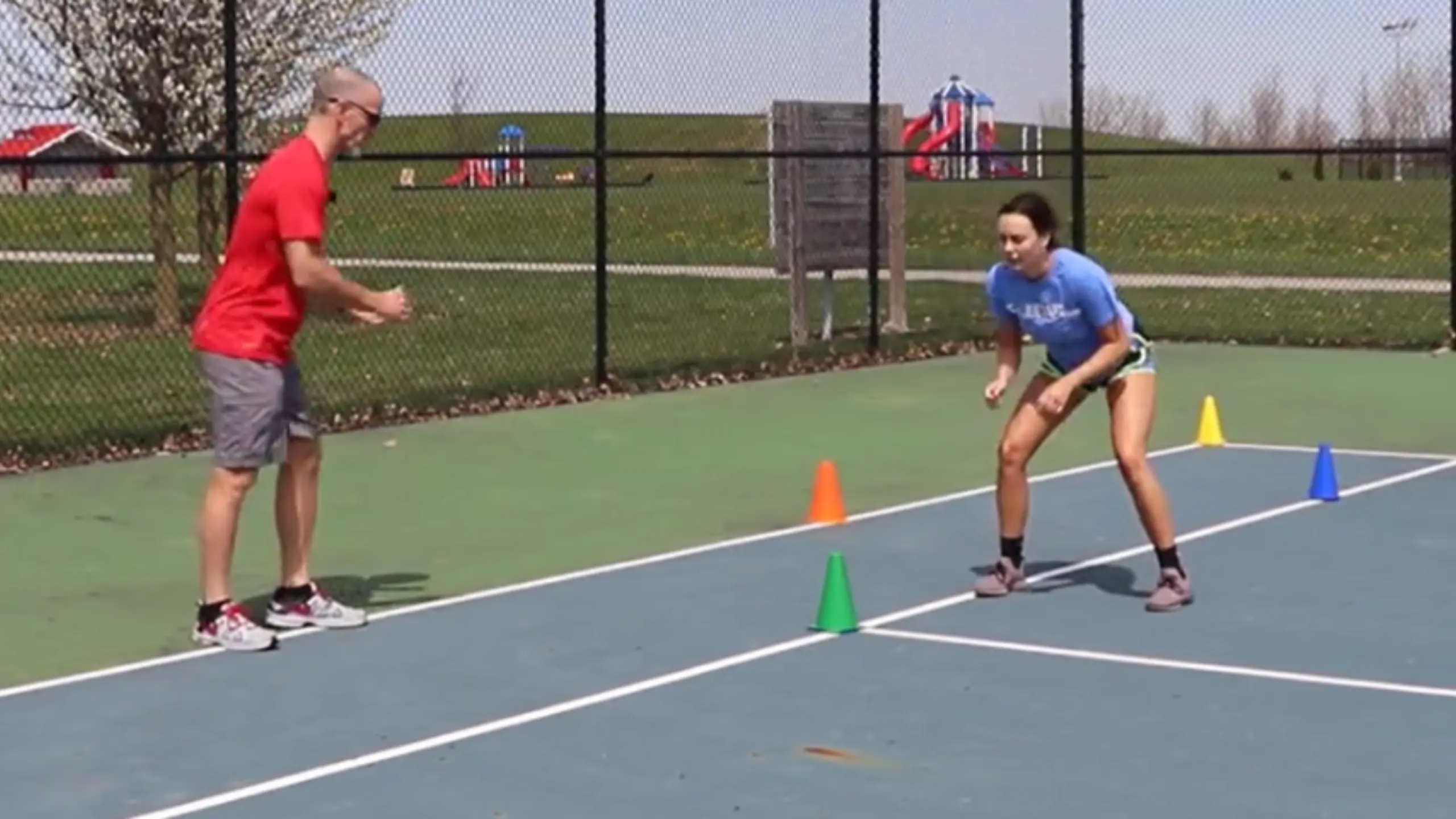
You need agility to play tennis well. Agility means you can move fast and change directions quickly. It also helps you stay balanced and avoid injuries. Agility is good for other things in life too. You can do some exercises and drills to be more agile for tennis. These exercises will make your muscles faster, your hips more flexible, your feet more nimble, and your eyes more alert. In this article, we will discuss how to improve agility for tennis players, exercise for agility training, and many more things.
Introduction
Tennis requires agility, which has a considerable influence on a player’s performance. This article discusses the benefits of agility training as well as critical areas to concentrate on. This article includes “Tennis Players’ Agility and How to Improve It”.
Exercises for Agility Training
This section contains a variety of agility training routines designed specifically for tennis players. Footwork activities to improve rapid movements, ladder drills to develop coordination, cone drills to improve change of direction, response drills to sharpen reflexes, and change of direction drills to imitate on-court scenarios are all covered.
Skip Rope
Skipping rope is simple and enjoyable. It improves your timing, core strength, and arm movement. It also strengthens your ankles and makes your steps smaller. Small steps will help you prepare for the game. You’ll need a rope that reaches your armpits when you stand on it to skip rope. Swing the rope over your head and under your feet while holding the handles. Jump with both feet over the rope and land softly on your toes. Maintain a straight back, close your elbows, and move your wrists along the rope. You can alter your jump speed, height, and direction.
Lunge Jumps
Jump lunges are difficult but beneficial. They force you to jump from one leg to the other, strengthening your legs and improving your balance. To begin jump lunges, place one leg in front and one leg behind. Bend both knees so that the back knee is on the floor. Check that the front knee does not extend past the toes. Jump up and switch legs in the air from here. Land with the opposite leg in front and the opposite leg behind. Perform this as quickly as you can without losing form. If jumping hurts your joints, you can substitute backward lunges. Step back with one leg, bending both knees, then forward, switching legs.
Drills on Ladders
Ladder drills are widely used and beneficial. They improve your footwork, your ability to change directions quickly, your speed, and your coordination.
A ladder or some cones on the ground are required for ladder drills. There are numerous ways to perform ladder drills, but here are a few examples:
- Step into the first square with one foot, then the other, starting at one end of the ladder. Step one foot out of the square, then the other. Repeat for each square until you reach the bottom of the ladder.
- Lateral in-and-out: Begin on one side of the ladder and work your way down. Step one foot into the first square, then the other. Step out oStep one foot out of the square, then the other. ays to the next square and do this until you reach the end of the ladder.
- Begin at one end of the ladder and step into the first square with one foot, then the other. Step out of the square, bringing one foot to the side of the ladder, then the other. Step one foot into the next square, then the other. Step out of the square, one foot to the side of the ladder, and one foot next to it.
Carioca
Another good workout is Carioca. It forces you to change directions quickly and twist your hips and body. Start at one corner of a square or rectangle marked with cones to do carioca. As you move sideways to the next corner, face sideways and cross one leg behind the other. Then, as you continue moving sideways, cross the other leg in front of the first. Continue in this manner until you reach the opposite corner. Then turn around and return to your starting point.
Cone Drills
Cone drills are another way to improve your agility for tennis by forcing you to move in different directions and angles. Here are a few examples:
- T-drill: Form a T with four cones, one in the center and three at the ends of a line. Begin at the center cone and work your way to the right. Slide to the left cone after touching it with your hand. Slide back to the right cone after touching it with your hand. Run back to the center cone after touching it with your hand. Then run to the top cone and touch it with your hand before returning to the center cone.
- Star drill: Arrange five cones in a star shape, one in the center and four at the ends of diagonal lines. Start at the center cone and run to any of the outer cones. Run back to the center cone after touching it with your hand. Do this in any order for each of the outer cones.
- Zig-zag drill: Arrange six cones in a zig-zag pattern, about 5 meters apart. Run from one end of the shape to the first cone. Run around the cone to the next one. Do this for each cone until you reach the end of the shape.
Agility Ball
Agility ball is both enjoyable and challenging. It forces you to react quickly, catch well, and move your feet. A friend and a ball that bounces in unusual ways, such as a reaction ball or a tennis ball with a cut on it, are required for agility ball. Stand about 10 meters apart from your friend. The ball will be thrown to you by a friend, and you must catch it before it bounces twice. Then you return it to your friend, who must catch it before it bounces twice. Perform this for as long as possible without dropping the ball. You can make it more difficult by throwing the ball farther, faster, or at an angle, or by moving around, such as shuffle, skip, or jump.
Conclusion
Tennis players must be extremely agile. It allows them to move more freely, play more effectively, and have more fun. It also helps them with other aspects of their lives. You can improve your tennis agility by performing these exercises and drills. Warm up before beginning any exercise and cool down afterwards. Also, pay attention to your body and adjust the intensity and frequency of your workouts based on your level and goals.
FAQs
Q1: What is agility?
Agility is defined as the ability to start, stop, and change directions quickly and with balance.
Q2: Why is agility important for tennis players?
Tennis players must be agile in order to react to incoming balls and move around the court efficiently. It also aids in the prevention of injuries and the enhancement of performance in other areas of life.
Q3: How can I improve my agility for tennis?
Tennis agility can be improved by performing exercises and drills that target your fast-twitch muscle fibers, hip extension, footwork flexibility, and coordination. Skipping rope, jump lunges, ladder drills, carioca, cone drills, and agility ball are a few examples.
Q4: How often should I do agility exercises and drills?
The frequency with which you perform agility exercises and drills is determined by your fitness level and goals. It is generally recommended to do them two to three times per week, with at least one day between sessions. Depending on your progress, you can also change the intensity and duration of your exercises and drills.
Q5: What are some benefits of agility exercises and drills?
The following are some of the advantages of agility exercises and drills:
- Enhance your reaction time, eye-hand coordination, and footwork.
- Make your muscles stronger, faster, and more flexible.
- Improve your posture, balance, and stability.
- Reduce your chances of injury and pain.
- Boost your self-esteem and motivation.
- Make your tennis game more enjoyable.




